Browse Exhibits (24 total)
Portraits in print
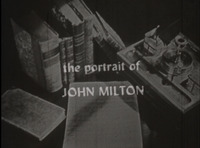
10 episodes, 1960, WHYY (Philadelphia)
From WNET:
"Each program presents the life of a famous author as it was reflected in his own writing. A series of drawings, etchings, lithographs, and photographs of the times and places mentioned recreates the times and physical appearance of each writer. A narrator describes these times and places, often from the authors’ works. In addition, actors on camera read well-known passages. The programs were prepared in cooperation with the Free Library of Philadelphia."
Philosophies of education
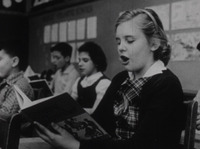
13 episodes, 1961, KTCA (St. Paul)
From WNET:
"A genuine understanding of the complex problems facing American education requires an appreciation of the concepts underlying each issues and problem. These concepts or philosophies, marked by controversy in some quarters, today command an increasing amount of attention from everyone directly or indirectly involved in American education. This series is a thirteen-program survey of, and a striking introduction to, the varieties of contemporary educational thought. Each program consists of an interview with an educator who represents a particular philosophy of education. Each is illustrated with filmed examples of the particular philosophy in practice. Station KTCA-TV in St. Paul-Minneapolis produced the series. The producer was Joseph T. McDermott, the station’s special projects director."
Red Myth

13 episodes, 1961, KQED (San Francisco)
From WNET:
"Thirteen half-hour programs from KQED in San Francisco describe the history of Communism, from Marx to Khrushchev, and explore some of the major fallacies in this system of thought. Each program contains commentary by noted historians and scholars, film clips of some of the historical events described, and re-enactments of other important episodes in the rise of Communism. Based on documents in the Hoover Institution of War, Revolution and Peace at Stanford University, the dramatic scenes are all adapted from the speeches and writings of the significant figures of the period – Marx, Lenin, Trotsky, Stalin and many others. The settings, costumes and makeup for the actors were carefully designed to reproduce with the utmost fidelity the figures and locations of the scenes they recreate, and were based on contemporary photographs and portraits in the archives of the Hoover Institution."
A Time to Dance
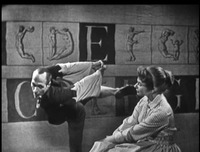
9 episodes, 1960, WGBH (Boston)
From WNET:
"A TIME TO DANCE is a series of nine programs which serve to introduce the audience to the three major dance forms – modern, ballet, and ethnic. Hostess-commentator Martha Myers and a distinguished group of dancers explain and illustrate the differences between each form, their special qualities and traditions, and their relations to each other through common sources. The dancers and Miss Myers perform excerpts from noteworthy dances, and discuss different attitudes towards the life and work of a dancer. In addition to performances by such well-known dancers as a Maria Tallchief, Andre Eglevsky, Jose Limon, Nora Kaye and Geoffrey Holder, Miss Myers uses early prints and unusual films of earlier artists such as Anna Pavlova and Ruth St. Denis to trace the changing look of dance."
Photography: The Incisive Art

5 episodes, 1960, KQED (San Francisco)
From WNET:
"From station KQED in San Francisco comes a series of programs designed to increase the viewer’s appreciation of the art of photography. Featuring one of America’s greatest photographers, Ansel Adams, the series is an exploration of the techniques and philosophy which can transform photography from a mechanical record to a delicate and sensitive art. Because television is a medium which appeals to the eye as well as to the ear of the audience, it is a particularly appropriate means of explaining photographic theory, of illustrating techniques as they are being used, and of showing the results of these techniques at the same time."
National Goals
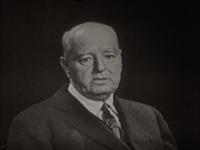
6 episodes, 1961, New York University TV
From WNET:
"In December 1960 a red-white-and-blue paperback book appeared across the country, the result of almost a year of hard work and thought by a commission that President Eisenhower and established to define the problems of the coming decades. The President’s Commission on National Goals published its finding in a series of brief analytical essays collected under the title Goals for Americans. This television series, NATIONAL GOALS, is based on some of the findings.
The members of the Commission did not set up these national goals in an arbitrary fashion. Rather, they analyzed the facts of our economic, political, and social structure, and the attitudes, opinions, desires, and needs of the American people; then they stated some of the problems that these suggest. The goals, the solutions to these problems, may well not be agreed upon. They serve as targets, for achievement, alteration, or rejection. The ultimate purpose of the Commission and of this series, in which some members of the Commission participate, is to simulate discussion by presenting the facts and some conclusions that can be drawn from them. Whether these goals are accepted or rejected, and how they are achieved – that must be decided by the American people."
Basic issues of man
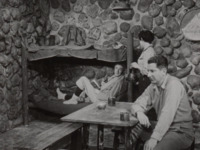
12 episodes, 1960-1963, WGTV (Atlanta)
From WNET:
"The series introduces the basic liberal arts studies and the basic issues with which they deal. The basic issues with which man deals are real, and the humanistic studies impinge on modern man’s own actions and attitudes. Each film will point out the historical humanistic literature which deals with the modern problem. This series identifies and illuminates certain basic issues which face all men – persistent problems which each man in every age must try to solve. Each program first poses a basic question and then presents some of the enduring … on that question. Although the series draws no conclusions, the programs deal with each of the following six areas: the nature of man, man and society, the political life of man, creativity and the arts, the scientific life of man, and the philosophical life of man. Several of the programs make extensive use of very imaginative and symbolic settings; several are half-hour plays."
Biblical masterpieces
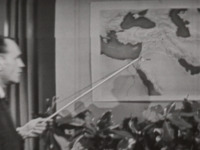
13 episodes, 1961, WUNC (Chapel Hill)
From WNET:
"From WUNC in Chapel Hill, North Carolina, comes a series of programs that explore the literature and history of the Bible. Intended for an adult audience, the programs examine both the well-known and the less familiar stories and personages of the Bible in the light of new work in archaeology, science and higher criticism. The orientation is non-sectarian and requires only some interest in the Judeo-Christian heritage of the Western world. On occasion, photographs, documents, and drawings are used to illustrate the lecture."
The face of Sweden

8 episodes, 1963, Swedish Institute for Cultural Relations and the Swedish Broadcasting Corporation for NET
From WNET:
"The face of Sweden illuminates the life and culture of Sweden. Each visual essay stands independently as a full consideration of a significant part of Swedish life, and each provides a key to the understanding of this small country and her people. The format for the series consists of voice over film, with occasional brief interviews. The content revolves about the central theme -- Sweden, a country where change is evolutionary and where moderation is characteristic. The series covers Swedish social politics, foreign policy, law, history, industry, culture and art. Among the distinguished persons who appear in the series are actress Ingrid Thulin and motion picture producer-director Ingmar Bergman (both in program6).
The series is admittedly a self-portrait. Its thesis as expressed by those involved in its production is summarized in the following four paragraphs.
Like the United States, Sweden has achieved a high standard of living while maintaining her concern for the preservation of democratic freedom and the dignity of the individual. In addition to material benefits, the population enjoys a remarkable degree of individual security. Poverty, unemployment and illiteracy are virtually non-existent.
Yet there are aspects of Swedish life and government that, on the surface, appear contradictory and have given rise to widely held misconceptions. It is commonly believed, for instance, that the high standard of living and the alleviation of social problems have been achieved through socialism and are therefore illusory benefits outweighed by a loss of individual freedom. Critics have attempted to prove that the country seethes with hidden social ills - a high suicide rate, mental illness, alcoholism, and illegitimacy.
The true picture is quite a different one. Sweden is ruled by a king, but her government is a constitutional monarchy. The Social Democrats have been the majority party of four decades, but they cannot operate without the support of coalitions in the minority parties. Furthermore, the country is a capitalistic democracy in which only three percent of the national industry is government controlled. That three percent is made up of primarily railroads, hydroelectric power facilities, and other public utilities that, in such a small country, do not offer reasonable returns to the private investor.
This series then explains from the Swedish point of view, the structure of the country’s society."
The friendly giant
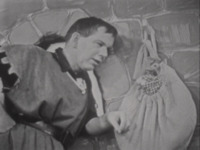
455 episodes, 1954-1959, 1966-1967, WHA-TV (Madison, Wisconsin) and Canadian Broadcasting Corporation
From WNET:
"Probably the oldest continuing children’s program on public television, THE FRIENDLY GIANT is Robert Homme (pronounced “hummy”). The outsized “Giant” (who seems so big because he lives in a video world of miniature buildings and stage props) works with puppets to communicate knowledge and information on subjects ranging from pets to the weather. The program is designed for children ranging in age from three to seven.
Each program opens in a farmyard where Friendly towers over miniature sets. He talks about farmyard animals and then invites his young viewers into his Castle where he reads stories, sings songs and talks with his little puppet friends."
Puppets in THE FRIENDLY GIANT are Rusty the Rooster and Jerome the Giraffe, operated and given voice by Rod Coneybears, and puppet casts Angie and Fiddle, operated by John and Linda Koegh.
THE FRIENDLY GIANT was first produced by WHA-TV, Madison, Wisconsin. Premiering May 1954, it was one of the longest running NET series and was nationally recognized as an outstanding program for children. For three consecutive years it won Ohio State Awards. Mr. Homme, its creator, a graduate of the University of Wisconsin who has done extensive radio programming in music, moved to Canada and has continued with THE FRIENDLY GIANT for the Canadian Broadcasting Corporation since 1958.
THE FRIENDLY GIANT is a presentation of National Educational Television. It was produced for the Canadian Broadcasting Corporation by Doug Davidson.

